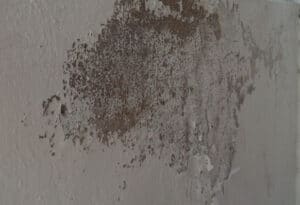Q: I have a 1970’s split level, 2000 sq ft house. I am renovating and have totally removed all the finished walls.
I always had to run a dehumidifier and I now see I have some moisture issues. On two walls I had efflorescence which I painted and now the floor about a foot out from the concrete block wall is spalling and has efflorescence. I also have a block chimney on one of the walls and inside brick fireplace and efflorescence is also appearing on the brick. My floor has some minor spider cracks about 6-10 foot long.
I have had waterproofing contractors give me estimates and it seems like they want to attack either from the outside or the inside? What do you feel is the best approach? – Mike M.
A: As moisture moves through concrete and masonry, it often dissolves salt compounds in the masonry and deposits them on the surface. The white, powdery deposits are called efflorescence. If the salt crystals develop beneath the concrete surface, this can lead to crumbling and flaking of the concrete surface, called spalling. Spalling can also be caused by other problems with the concrete mix or rusting of the reinforcing steel, but moisture is always a key factor.

It’s always better to address these problems from the exterior, when this is an affordable option. Concrete is very porous to moisture and acts like a sponge, wicking water from the soil and moving it into your house. Moisture always moves from wetter to drier conditions and the interior of a house is almost always drier than the soil.
Exterior Treatments Best
Stopping moisture at the interior surface of the concrete or other types of masonry rarely works as you are fighting the pressure exerted by the moisture. Paints and coatings on the interior will eventually peel and flake off and the concrete will continue to spall. Now you’ll have the additional mess caused by the failing paints and sealants.
It’s possible to remove minor efflorescence with a stiff brush and detergent or a weak acidic solution such as vinegar and water. Tougher stains need more powerful cleansers or power washing. However, the stains are likely to return unless the underlying moisture problem is addressed.
Improved Drainage and Waterproofing
Exterior solutions use a combination of improved drainage and waterproofing/dampproofing to keep excess moisture out of the concrete. Improved site drainage and foundation drains (wall and footing drains) prevent the buildup of liquid water against the concrete, reducing hydrostatic pressure. Coatings on the outside surface of the concrete block the transmission of water vapor and, in some cases, liquid water into the concrete. For subsurface water, a sump pump may also be needed.
The optimal combination of site drainage, foundation drainage (wall and footing drains), and surface coatings will depend on specific site conditions and your budget. Sometimes, very simple and inexpensive efforts like better gutter and downspouts can yield enormous benefits. On a wet site with a high water table, more extensive drainage and waterproofing may be needed.
Bottom line: Exterior solutions are always better. Miracle treatments on the interior require a miracle to work as promised. — Steve Bliss, BuildingAdvisor.com
You can read more at these links: Site Drainage Foundation Drainage Waterproofing and Dampproofing
Leave a Reply